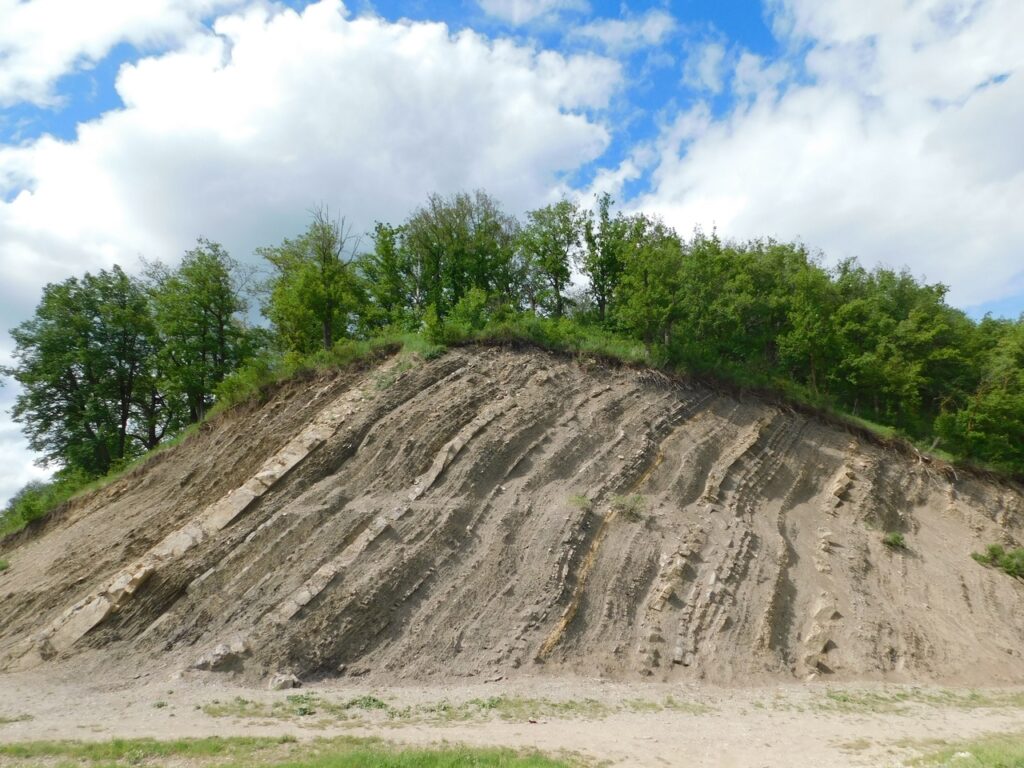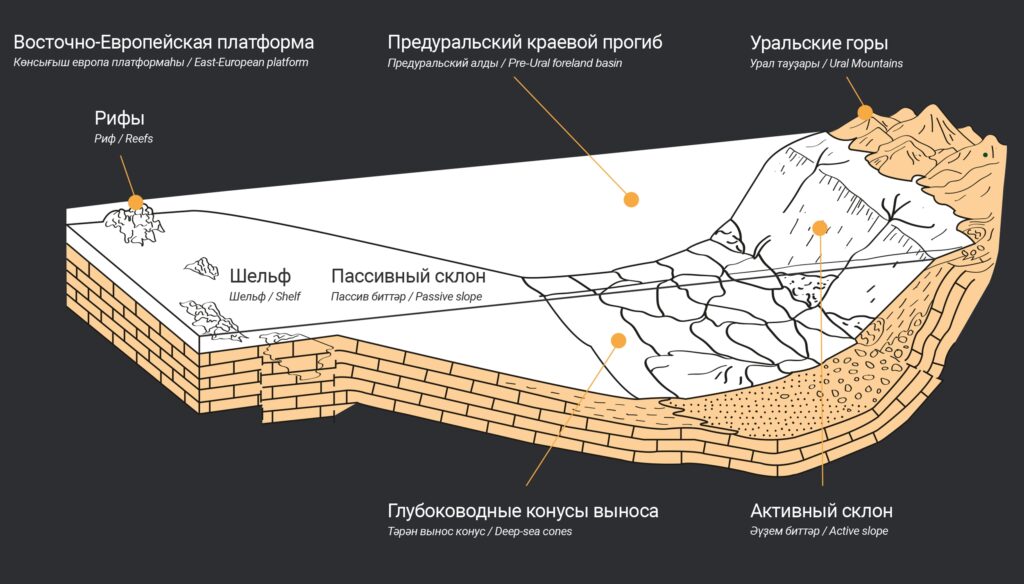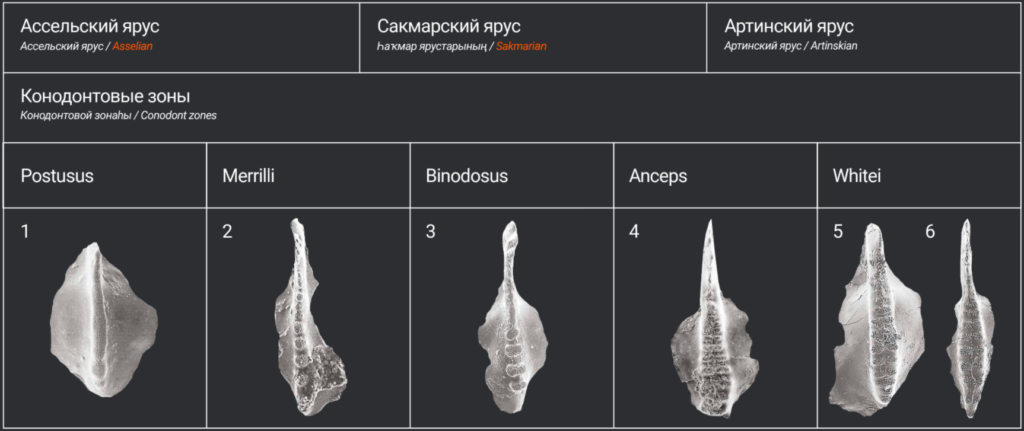
The Dalniy Tyulkas Section rocks were forming about 290 million years ago at the same time as the Ural Mountains and the Pre-Ural foreland basin. Here in a deep-sea environment continental slope flysch strata were formed. They are deposits of deep-water cones of the Ural mountain rivers.
Because of the small debris coming in in large quantities in the sea, the bottom waters were muddy and almost lifeless. Sometimes an introduction terrigenous material from the land slowed down, the water became clear, and benthic organisms appeared here for a short time. They were individual brachiopods and foraminifera whose shells are present in the form of interlayers in the section. On the other hand, there are animals that lived in the water column. These are numerous radiolarians, conodonts, ammonoids, fishes. Sediments accumulated in a hot climate. Along marshy banks there were towering tree-like horsetails, such as calamites. Their trunk prints can be found in the rocks of the Dalniy Tyulkas Section. Air currents used to bring and deposit plenty of spores and ancient plant pollen in the sea (Fig. 9).
Such an amazing combination and a continental biota make the Dalniy Tyulkas Section a unique geological object that allows to study not only the history of the ancient sea basin, but also the surrounding area.
Geological natural monument. Established by an Order of the Government of the Republic of Bashkortostan in 2007.
Геологический разрез Дальний Тюлькас — эталон («золотой гвоздь») нижней границы артинского яруса пермской системы Международной стратиграфической шкалы (МСШ). Дата ратификации 26.01.2022 г.
Золотой гвоздь — точка, выбранная в конкретном разрезе и являющаяся эталоном нижней границы яруса Международной шкалы геологического времени.
Border Biomarkers
The lower boundary of the Artinskian Stage is established by the first appearance of the species Sweetognathus whitei (Rhodes), which allows to trace this level all over the world.
Geological characteristics
Dalniy Tyulkas Section is a large series of terrigenous-carbonate rocks (aleurolite, sandstones, limestones) of the Sakmarian and Artinskian of the Permian. There are volcanic tuff intercalations. The deposits contain radiolaria (Fig. 4), plant residues (sea weed, caamites, palynomorphs), acritarchs, fishes (Fig. 5), foraminifer (Fig. 6), ammonoids (Fig. 7), single brachiopods.
The material was prepared jointly with the Institute of Geology of the Ufa Federal Research Center of the Russian Academy of Sciences (RAS)



